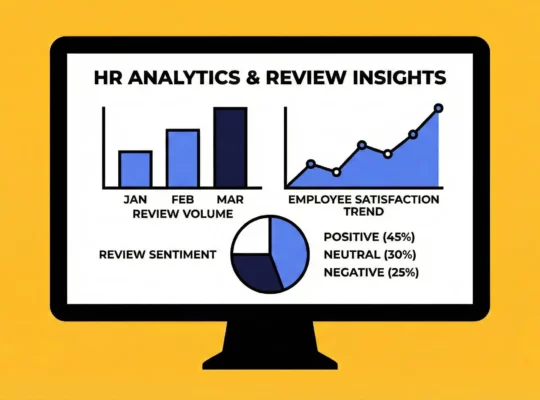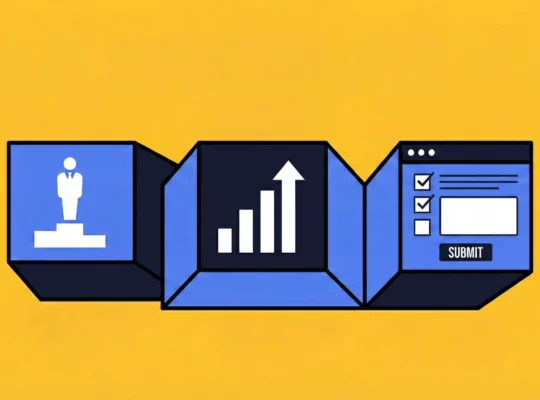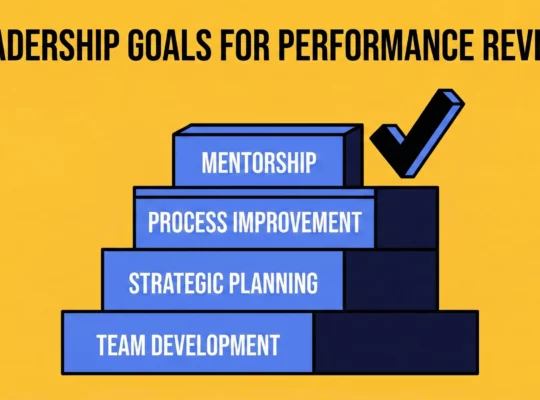What are the 5 C’s of employee engagement, and why do they matter for modern organizations? This question strikes at the heart of employee engagement, a critical factor in boosting productivity, sparking innovation, and reducing turnover. One of the most effective frameworks for fostering engagement is the 5 C’s: Care, Connect, Coach, Contribute, and Congratulate. At Review.jobs, we understand how vital these principles are for building a healthy, engaged workforce, and our platform helps organizations succeed by focusing on employee engagement strategies.
- Care – Showing Genuine Concern for Employee Wellbeing
- Connect – Building Strong Relationships
- Coach – Guiding Employees to Reach Their Full Potential
- Contribute – Enabling Employees to Add Value
- Congratulate – Recognizing Achievements and Celebrating Success
1. Care – Showing Genuine Concern for Employee Wellbeing
Caring for employees goes beyond offering competitive salaries or benefits—it’s about showing genuine concern for their overall well-being. From offering mental health support to providing flexible work arrangements and comprehensive health programs, a company’s commitment to its employees’ well-being directly impacts their engagement and productivity.
According to research, companies that invest in mental health programs see a ROI of $4 for every dollar invested, as such programs significantly reduce absenteeism and disengagement. Employees who feel cared for are more likely to stay committed to their roles, reducing turnover rates and fostering long-term loyalty.
Leveraging Employee Reviews to Build a Caring Company Image
Collecting employee testimonials shows that a company values employees’ perspectives and fosters an open communication culture. By giving employees a voice, the company demonstrates that it listens and responds to their feedback, creating a work environment where people feel heard and respected.
These testimonials provide authentic insights into the employee experience, helping to shape a positive employer brand that reflects the organization’s commitment to its workforce. Sharing testimonials publicly can attract potential candidates by portraying the company as a supportive, employee-focused organization.
Benefits of Anonymous Employee Reviews
- Create a safe space for honest feedback
- Reveal unspoken issues
- Provide a deeper understanding of employee satisfaction
- Identify patterns and address underlying problems
- Improve areas that impact employee satisfaction and retention
Introducing Review.jobs
Review.jobs is a comprehensive platform designed to help organizations collect, manage, analyze, and showcase employee reviews. It offers an all-in-one solution for managing feedback, improving company culture, and enhancing employer branding through verified, anonymous employee testimonials.
Key Features of Review.jobs
Collect Reviews:
- Easy and Secure: Easily gather authentic and verified employee reviews using surveys and feedback tools. Secure and anonymous options encourage honest insights.
- Boosting Engagement: Fosters trust and openness by allowing employees to share experiences without fear, leading to higher engagement and transparency.
Manage Feedback:
- Centralized Dashboard: Track, moderate, and respond to employee reviews efficiently with a centralized dashboard.
- Demonstrate Proactiveness: Streamlines review management and allows for quick responses, showing that the company actively addresses employee feedback, furthering engagement.
Analyze Employee Sentiment:
- Data-Driven Insights: Utilize advanced analytics and reporting tools to track trends in employee sentiment and identify areas for improvement.
- Actionable Decisions: Gain valuable insights to make data-driven decisions that enhance workplace culture and employee satisfaction, ultimately leading to a more engaged workforce.
Showcase Your Company Culture:
- Strengthen Employer Brand: Display verified employee testimonials on company profiles, career pages, and social media, strengthening your employer brand reputation.
- Attract Top Talent: Celebrate positive employee experiences and showcase a positive work environment, reinforcing a sense of pride within your team and attracting top talent.
2. Connect – Building Strong Relationships
Human connection is the foundation of any successful organization. A team that feels connected works more collaboratively, communicates openly, and builds trust—key ingredients for employee engagement. In a time where hybrid and remote work models are common, fostering connections is crucial to maintaining a positive work environment, and that starts effective remote onboarding.
Effective Practices to Build Connections:
Building strong connections within a team is essential for fostering a positive and productive work environment. Here are some effective practices to consider:
Open Communication Channels
- Encourage Open Dialogue: Foster a culture where employees feel comfortable sharing their thoughts, ideas, and concerns without fear of judgment.
- Regular Feedback Sessions: Implement regular feedback mechanisms, such as one-on-one meetings or performance reviews, to provide constructive feedback and address any concerns.
- Transparent Communication: Ensure that information is shared openly and honestly across the team, avoiding misunderstandings and fostering trust.
Team-Building Activities
- In-Person Gatherings: Organize team-building events, retreats, or staff motivation exercises to foster camaraderie and strengthen relationships.
- Virtual Team-Building: Utilize online tools and platforms to facilitate team-building activities, even when working remotely.
- Social Events: Encourage social interactions outside of work to build personal connections and strengthen team bonds.
Cross-Departmental Collaboration
- Shared Projects: Assign team members to cross-functional projects to promote collaboration and knowledge sharing.
- Interdepartmental Meetings: Schedule regular meetings or forums for cross-departmental collaboration and information exchange.
- Mentorship Programs: Establish mentorship programs that connect employees from different departments, providing opportunities for guidance and support.
3. Coach – Guiding Employees to Reach Their Full Potential
Coaching is a crucial element of employee engagement. It’s about helping employees grow and guiding them toward reaching their full potential. Regular feedback, personalized development plans, and career coaching are powerful ways to ensure employees feel supported in their growth journey.
Organizations that invest in coaching see a clear improvement in employee performance and retention. Mentorship programs, whether formal or informal, provide employees with a sense of direction and purpose within the company. Engaged employees who feel they are growing within their roles are far less likely to seek opportunities elsewhere.
Coaching Strategies:
Coaching is a powerful tool for empowering employees, driving performance, and promoting career development. By providing guidance, support, and feedback, coaches can help individuals reach their full potential.
Personalized Career Development Plans
- Individualized Goals: Work with each employee to set clear and achievable career goals that align with their aspirations and the organization’s objectives.
- Skill Development: Identify areas for improvement and create a personalized development plan to address these needs.
- Career Pathing: Explore potential career paths within the organization and provide guidance on the necessary steps to achieve them.
Regular Feedback Sessions
- Constructive Feedback: Provide regular feedback that is specific, actionable, and focused on growth rather than simply performance evaluation.
- Two-Way Communication: Encourage open dialogue and active listening to ensure that both the coach and mentee are heard and understood.
- Continuous Improvement: Use feedback as an opportunity to identify areas for improvement and develop new skills.
Employee Development Programs
- Leadership Development: Offer programs to develop leadership skills, such as decision-making, communication, and team-building.
- Technical Training: Provide opportunities for employees to acquire new technical skills and stay up-to-date with industry trends.
- Soft Skills Development: Focus on developing essential soft skills, such as communication, problem-solving, and emotional intelligence.
4. Contribute – Enabling Employees to Add Value
Engaged employees want to know that their contributions matter. When employees understand how their work impacts the bigger picture, they are more motivated to give their best. Encouraging employees to take ownership of projects, participate in decision-making, and provide suggestions enhances their sense of value and belonging.
How to Encourage Contributions?
A culture of innovation thrives on the contributions of employees at all levels. By creating opportunities for employees to share their ideas and participate in decision-making, organizations can foster a sense of ownership and drive continuous improvement.
Implementing Suggestion Platforms
- Anonymous Feedback: Provide a platform for employees to submit their ideas anonymously, ensuring that they feel comfortable sharing their thoughts without fear of judgment.
- Regular Review: Establish a process for reviewing and evaluating employee suggestions, providing feedback, and considering implementation.
- Recognition and Rewards: Acknowledge and reward employees for their contributions to foster a culture of innovation and recognition.
Hosting Regular Company-Wide Meetings
- Open Forums: Create open forums where employees can share their ideas and provide feedback on organizational initiatives.
- Brainstorming Sessions: Facilitate brainstorming sessions to encourage creative thinking and generate new ideas.
- Q&A Sessions: Allow employees to ask questions and seek clarification on company policies, strategies, and initiatives.
Encouraging Cross-Functional Collaboration
- Shared Projects: Assign employees to cross-functional teams to promote collaboration, knowledge sharing, and diverse perspectives.
- Interdepartmental Meetings: Schedule regular meetings or forums for cross-departmental collaboration and information exchange.
- Mentorship Programs: Establish mentorship programs to connect employees from different departments, providing opportunities for guidance and support.
5. Congratulate – Recognizing Achievements and Celebrating Success
Recognition is one of the most powerful tools in creating an engaged workforce. Timely recognition of employee achievements, whether big or small, reinforces positive behavior and motivates individuals to continue performing at their best.
According to a recent study, 69% of employees stated they would work harder if they felt their efforts were better recognized. This underscores the importance of recognizing contributions regularly and meaningfully.
Effective Recognition Programs
Recognition is a powerful tool for boosting morale, motivating employees, and fostering a positive work environment. Effective recognition programs acknowledge and celebrate employees’ achievements, contributions, and hard work.
Peer-to-Peer Appreciation Platforms
- Foster a Culture of Gratitude: Encourage employees to recognize and appreciate their colleagues’ contributions.
- Promote Positive Relationships: Strengthen team bonds and build a supportive work environment.
- Identify Hidden Talent: Recognize employees who may not be in leadership roles but make significant contributions.
Public Recognition in Meetings
- Highlight Achievements: Regularly acknowledge and celebrate team and individual accomplishments in team meetings.
- Inspire Others: Public recognition can motivate others to strive for excellence and contribute to the team’s success.
- Boost Morale: Recognizing employees in front of their peers can boost morale and create a positive work atmosphere.
Celebrating Personal Milestones
- Show Appreciation: Acknowledge and celebrate personal milestones, such as birthdays, work anniversaries, or significant life events.
- Foster a Sense of Belonging: Recognizing personal milestones demonstrates that the organization values its employees as individuals and cares about their well-being.
- Strengthen Employee Relationships: Celebrating personal milestones can help strengthen relationships between employees and their managers.
Annual Awards or Employee Appreciation Days
- Formal Recognition: Establish annual awards or events to recognize outstanding achievements and contributions.
- Employee Appreciation: Dedicate a day or week to celebrate employees and express gratitude for their hard work.
- Foster a Positive Culture: These events can create a positive and supportive work environment that encourages employee engagement and loyalty.
By focusing on these five pillars, leaders and HR professionals can improve employee engagement significantly and create a culture where employees feel valued, connected, and motivated to contribute to the organization’s success. At Review.jobs, we believe that implementing the 5 C’s is essential for fostering long-term engagement and building an engaged workforce. Through our platform, organizations can manage employee reviews, gain valuable insights, and take meaningful action to improve employee engagement. Companies can ensure long-term success, a motivated team, and a thriving workplace culture by focusing on these strategies.





